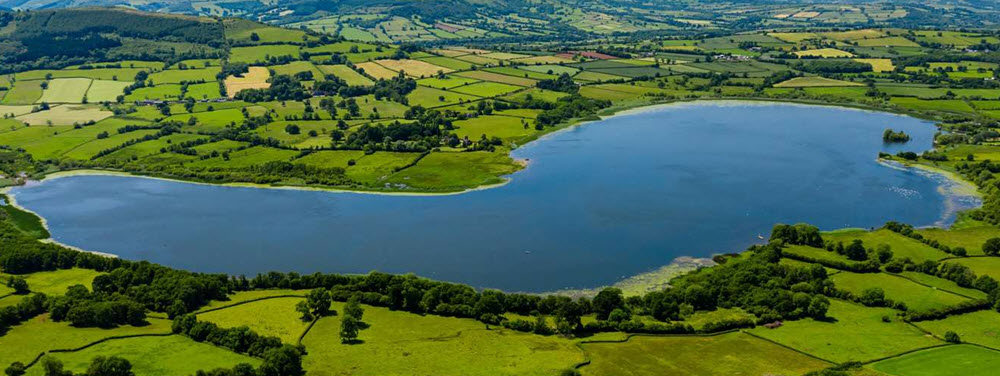East of the Brecon, between the Central Beacons and the Black Mountains, lies Wales’s largest natural lake, Llangorse Lake.
The lake is located in a cavity formed by glaciers and 154 meters above sea level.
Llangorse lake is surrounded by green hills, fields and meadows.

It is a very beautiful place where you can sail or canoe. You can rent a boat from the sailing club or the boat hire center. They are both located on Llangorse Common on the northwest shore. If you are looking for something other than a boat, there are also smaller dinghies, windsurfing boards, canoes, kayaks, stand-up paddleboards, pedal boats or rowing boats.
In order to preserve the beaches and wildlife at Llangorse Lake, it has been decided
how many people are allowed on the lake. It is also marked in the water with buoys which zones are forbidden for boats to go to. Permission is required to drive in the water and launch fees are also added.
Llangorse Lake is known for its good fishing. It is available with pike, perch, roach, bream, tench and eels here. It is only allowed to fish from a boat, not from the shore. You need a rod license and a permit from the boat hire center. Only catch-and-release applies.
On the northwest shore there is information about the lake’s cultural heritage.
There is an artificial island made of oak, willow and hazel. It is over 1000 years old and trees grow over it. It was probably once the site of a royal palace.
At Llangorse Lake there are plenty of wildlife. The most common mammals seen there are otters and water voles. They usually hide in the reeds, so it is not so easy to see them, maybe just a glimpse of them.
You will not be able to miss the bird life of the lake anyway. There are warblers, coots, swallows and swifts. At different times of the year, large flocks of Canada geese and other migratory birds can be seen at Llangorse Lake.
Along the west shore is a hiking trail that leads to the Llangasty Nature Reserve near Ty-Mawr Farm. It was in Llangorso Lake that the largest pike caught on a rod was caught.
It was in 1846 that O. Owen was the proud fisherman who pulled in the big pike that weighed 30.8 kg.
In 2004, a carcass was found from a pike that appeared to be the same size as Owens.
The Environment Agency for Age Testing took it with it to find out the weight.
The Llangasty Nature Reserve surrounds the lake and is a protected area.
At Llangorse Lake lives a dragonfly, Ishnura pumilio. It is only there and in one other place in the UK.
Llangorse lake is also one of the most mentioned sites in Welsh folklore. Llangorse Lake has been known to man for many centuries. It has also meant that it has had many names. Both in the Welsh language and in English.
Llyn Syfaddon, Syfaddan and Brycheiniog Mere. The English name Llangorse Lake is relatively new.
The lake is located between the river Wye in the north and the river Usk in the south. The lake was formed by melting glaciers. The water was caught on a plateau but when it eventually overflowed, the stream Afon Llynfi formed.